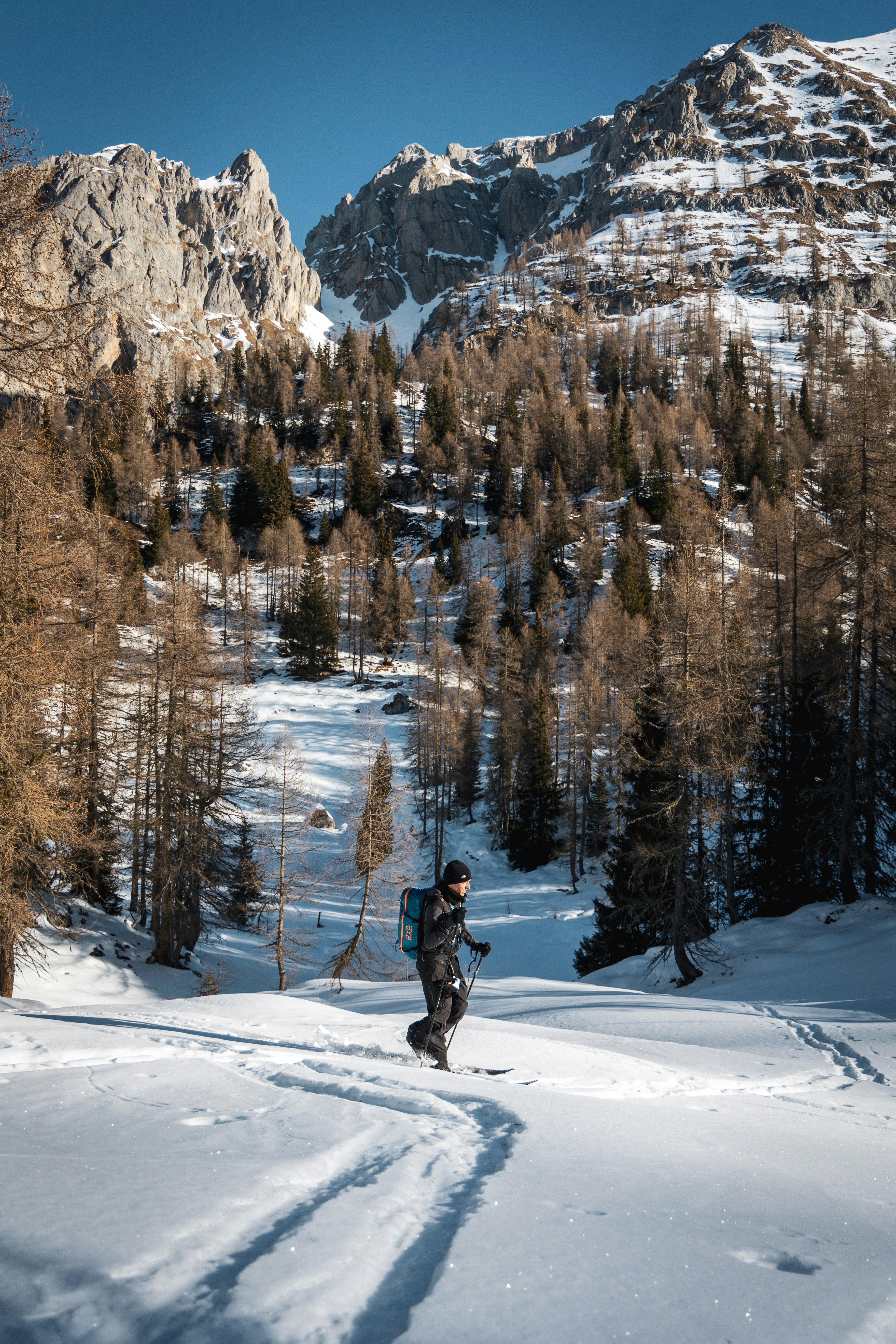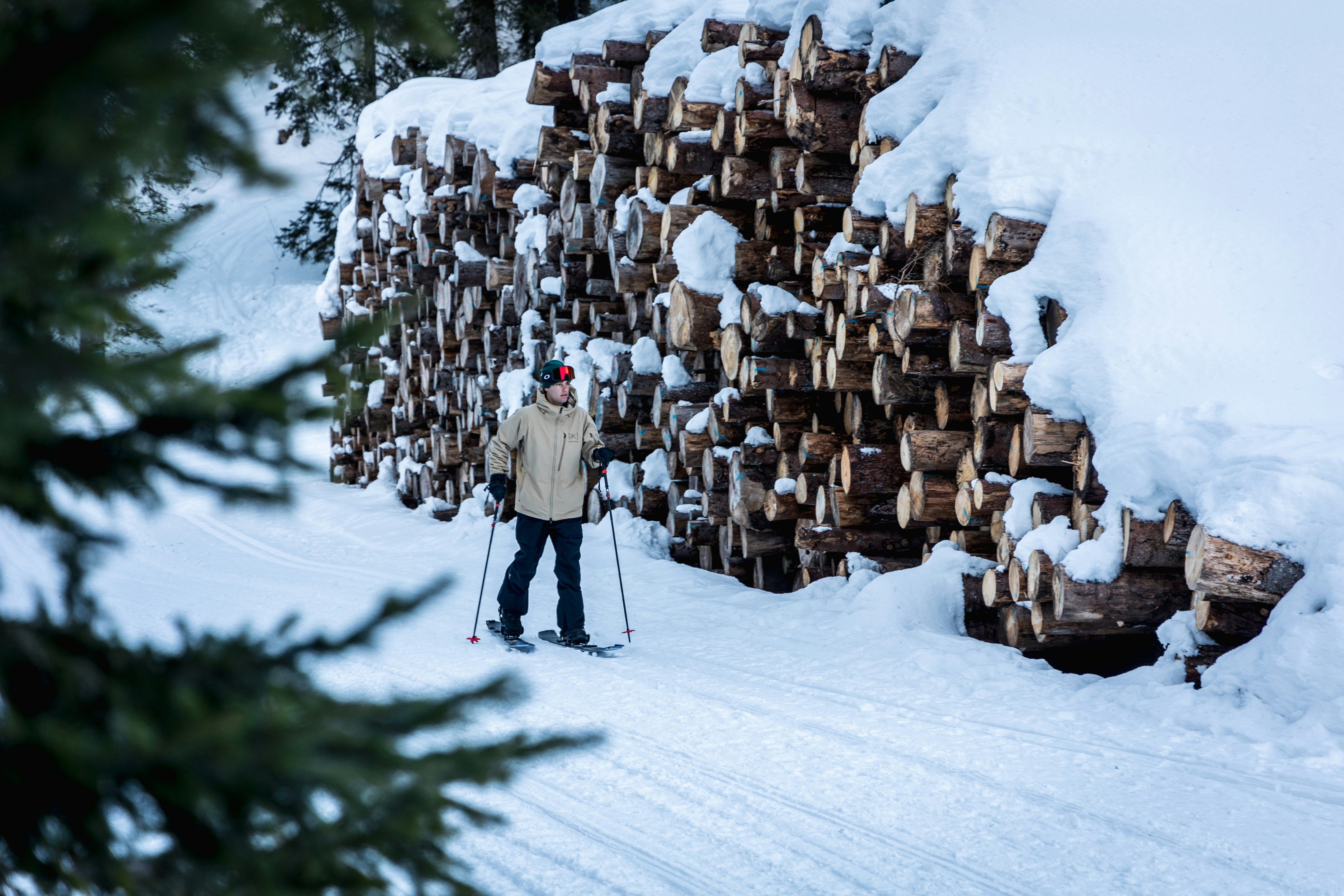Burton Step-On Splitboard
We tried the new splitboard binding with Step On technology
- Author: Michele Guarneri
- Photographer: Michele Guarneri
The Mini Mountain Mash, organized by Burton in collaboration with Mini in Madonna di Campiglio, northern Italy, has for years been an event where riders from all over the world come together and hang out, as well as a benchmark for international competitions. Basically the perfect occasion to try out the hottest innovation in splitboarding.

Anyone who regularly hits the skin track knows all too well the headache that sloppy split boot-binding systems can cause. When compared to ski touring, it feels like skinning with an unstuck topsheet, creating unwanted play that makes ascending and sidehilling up steep slopes nothing short of a nightmare. This largely happens as—unlike with hard boots and tech bindings, where play is down to the wrong size—the softness of snowboard boots (necessary on the downhill, as well as for comfort) makes uphills decidedly more difficult. The foot moves around in the boot, the boot moves around in the strap binding, which no matter how much you tighten it, will never keep everything firmly in place. When you consider the width of the equipment and the completely different shape (to that of a ski), it doesn’t take a genius to figure out that anything from a vaguely technical section, to hard, icy conditions, or even just a few kick turns on the steep, can turn a fun day out with friends into an experience approaching the ninth circle of hell. For years now, splitboard makers have tried to play down the problem—making boots harder here, changing the structure and construction materials of the bindings there—but with very little to show for their efforts.
It had to happen sooner or later: a promising solution has been found that could well put paid to the majority of these issues. From winter 2024-25, Burton will offer a new version of their lauded, innovative Step On tech designed for splitboarding. So how does it work, and how is it different to classic split bindings?

Let’s start with the base: The Step On split binding system, like the Hitchhiker binding, uses the Spark Tesla T1 baseplate, so is compatible with most Pucks mounting systems. The heel riser is of course incorporated in the baseplate. The Step On system is positioned on top, its semi-automatic technology eliminating the need for ratchet straps and making entry super quick. The system works in harmony with compatible boots: four toe hooks attach to the sturdy cleats in the boot, while a heel cleat clamps it to the binding, preventing any movement and avoiding any unpleasant surprises. Thanks to this technology, stepping in and out of the binding is a breeze, even on tricky terrain. Lastly, you can adjust the position of the hiback with a dial, including negative lean for the ascent and four options for the descent.
But what makes it so different from its competitors in terms of sensation? Simple: imagine having the entire sole of your foot (and boot) firmly anchored to the binding up as far as your toes, with no margin for torsion save for the natural movement of your foot inside the boot. Compared to a classic split binding, it eliminates most of the play that regular straps can’t, increasing stability and rigidity, especially when sidehilling. You can really feel the difference: during kick turns and on steep slopes, it almost feels like a hard binding—try it and see if you don’t believe us. A little play persists in the boot itself, but that can be reduced completely thanks to the precise regulation of compatible boots. Burton recommends the Photon, where the double BOA lets you find the best possible fit to keep slop to a minimum. The automation and speed of step in and release are a huge plus at transition time: it’s so much quicker than a classic setup, which will keep your skier friends, who are used to hanging around waiting for you, happy.

Which brings us to the downhill, where purists might be a little skeptical. The Step On binding is solid, really solid—so solid in fact that some even dare to spin off huge kickers. After two days of carving and tricks on the rails at Campiglio’s legendary Ursus Snowpark, we’re only too happy to confirm this. The only difference is the absence of easy-going softness that soon only classic bindings are likely to have, but you get used to it in no time considering the countless advantages of this binding. And don’t forget that all Burton binding base plates come with a lifetime guarantee.
Good job team!
Specifiche tecniche
The Brand
Share this article

